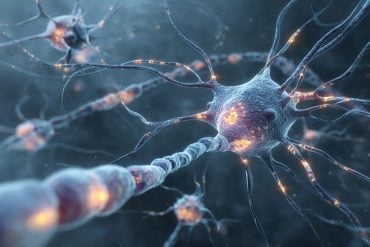Summary: A new study reveals a group of genes that induces differences in brain development of males and females, and triggers the initiation of sexual maturation.
Source: Columbia University.
Researchers have identified a group of genes that induces differences in the developing brains of male and female roundworms and triggers the initiation of puberty, a genetic pathway that may have the same function in controlling the timing of sexual maturation in humans.
The study, led by Columbia University scientists, offers new evidence for direct genetic effects in sex-based differences in neural development and provides a foundation to attempt to understand how men’s and women’s brains are wired and how they work.
The research was published Jan. 1 in eLife, an open-access journal founded by the Howard Hughes Medical Institute, the Max Planck Society and the Wellcome Trust.
Scientists have long known that puberty is accompanied by substantial changes in the brain characterized by the activation of neurons that produce hormonal signals. But what causes the brain to start releasing the hormones that switch on puberty remains elusive.
“In this paper we show that a pathway of regulatory genes acts within specific neurons to induce anatomical and functional differences in the male versus female brain,” said lead study author Oliver Hobert, professor in Columbia’s Department of Biological Sciences and a Howard Hughes Medical Institute investigator.
“Remarkably, we found that each member of this pathway is conserved between worms and humans, indicating that we have perhaps uncovered a general principle for how sexual brain differences in the brain are genetically encoded.”
For their study, the researchers worked with the transparent roundworm C. elegans, the first multicellular organism to have its genome sequenced. The worm’s genetic makeup is similar to that of humans, making it one of the most powerful research models in molecular genetics and developmental biology.
The research team singled out C. elegans with a mutation in a single gene known as Lin28. More than a decade ago, scientists discovered a link between mutations in the Lin28 gene and early-onset puberty in adolescent humans, a highly heritable condition that affects about 5 percent of the population. Conversely, overexpression of Lin28 is also associated with a delay in puberty.
“We knew the gene existed in humans, mice and worms, but we didn’t understand how it controlled the onset of puberty,” Hobert said. “Did Lin28 work directly with the brain? In what tissue type? What other genes did Lin28 control?”
In analyzing mutant C. elegans strains, the researchers found that worms with early-onset puberty carried the mutated Lin28 gene, similar to humans. They also discovered three additional genes associated with premature sexual maturation — the most interesting, the fourth gene, called Lin29.

Lin29 turned out to be present only in the male brain and expressed in the central neurons, establishing a distinct difference in the neural structures of males and females. Even more interesting, male C. elegans
missing the Lin29 gene had a male appearance but moved and behaved more like females.
“If you look at animals, including humans, there are dramatic physical and behavioral differences between males and females, including, for example, how they move,” Hobert said. “The Lin29-deficient male worms, in essence, were feminized.”
Laura Pereira, the paper’s first author and a postdoctoral fellow in Columbia’s Department of Biological Sciences, said the study is important because it makes the case that specific genes exist that control sex differences in the neural development. “It opens up new questions about whether differences in male and female behavior is hardwired in our brains,” she said.
The first authors of the paper also include, Chen Weng and Esther Serrano-Saiz, Columbia University. Other co-authors include Florian Aeschimann and Helge Grosshans, Friedrich Miescher Institute for Biomedical Research, University of Basel, Switzerland, and Hannah Lawson and Douglas S. Portman, University of Rochester.
Funding: The research was supported by the Howard Hughes Medical Institute and an R37 grant from the National Institute of Neurological Disorders and Stroke.
Source: Carla Cantor – Columbia University
Publisher: Organized by NeuroscienceNews.com.
Image Source: NeuroscienceNews.com image is credited to Nicoletta Barolini/Columbia University.
Original Research: Open access research for “Timing mechanism of sexually dimorphic nervous system differentiation” by Laura Pereira, Florian Aeschimann, Chen Wang, Hannah Lawson, Esther Serrano-Saiz, Douglas S Portman, Helge Großhans, and Oliver Hobert in eLife. Published January 1 2019.
doi:10.7554/eLife.42078
[cbtabs][cbtab title=”MLA”]Columbia University”Genes That Drive Male-Female Brain Differences and Timing of Puberty.” NeuroscienceNews. NeuroscienceNews, 2 January 2019.
<https://neurosciencenews.com/genes-puberty-male-female-brain-10406/>.[/cbtab][cbtab title=”APA”]Columbia University(2019, January 2). Genes That Drive Male-Female Brain Differences and Timing of Puberty. NeuroscienceNews. Retrieved January 2, 2019 from https://neurosciencenews.com/genes-puberty-male-female-brain-10406/[/cbtab][cbtab title=”Chicago”]Columbia University”Genes That Drive Male-Female Brain Differences and Timing of Puberty.” https://neurosciencenews.com/genes-puberty-male-female-brain-10406/ (accessed January 2, 2019).[/cbtab][/cbtabs]
Abstract
Timing mechanism of sexually dimorphic nervous system differentiation
The molecular mechanisms that control the timing of sexual differentiation in the brain are poorly understood. We found that the timing of sexually dimorphic differentiation of postmitotic, sex-shared neurons in the nervous system of the Caenorhabditis elegans male is controlled by the temporally regulated miRNA let-7 and its target lin-41, a translational regulator. lin-41 acts through lin-29a, an isoform of a conserved Zn finger transcription factor, expressed in a subset of sex-shared neurons only in the male. Ectopic lin-29a is sufficient to impose male-specific features at earlier stages of development and in the opposite sex. The temporal, sexual and spatial specificity of lin-29a expression is controlled intersectionally through the lin-28/let-7/lin-41 heterochronic pathway, sex chromosome configuration and neuron-type-specific terminal selector transcription factors. Two Doublesex-like transcription factors represent additional sex- and neuron-type specific targets of LIN-41 and are regulated in a similar intersectional manner.






